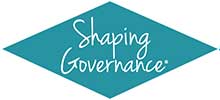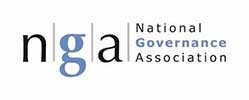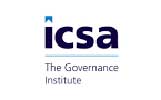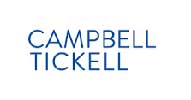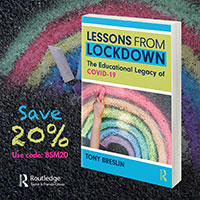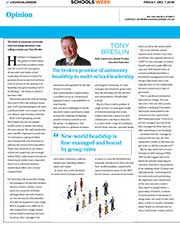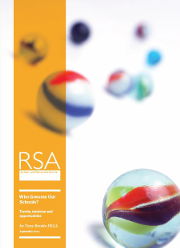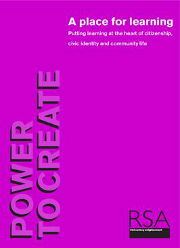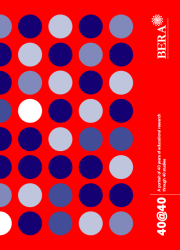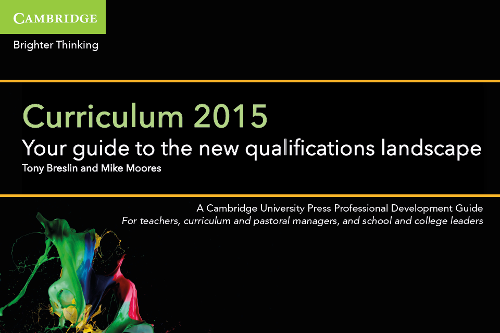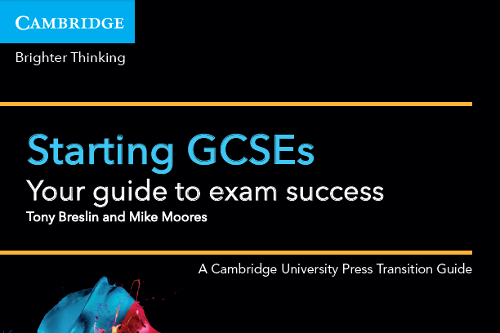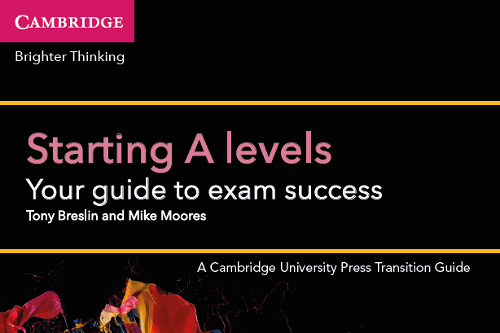












The UK Is home to 165,000 charities of all shapes and sizes
Financial Times, December 4, 2015

"Agencies across the governance landscape need to work together to establish a cross-sector working group or commission on governance."
Recommendation 29
Who Governs Our Schools? (RSA, 2017)
Transform Governance is a joint venture between Breslin Social Impact and Permuto Consulting
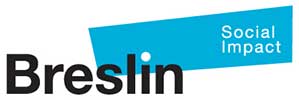

Need consultancy support? We have access to a range of specialists across sectors, across functions, and across the UK and beyond. Contact us to explore possibilities.
Lessons from Lockdown: education beyond Covid-19
Tuesday 19th May 2020
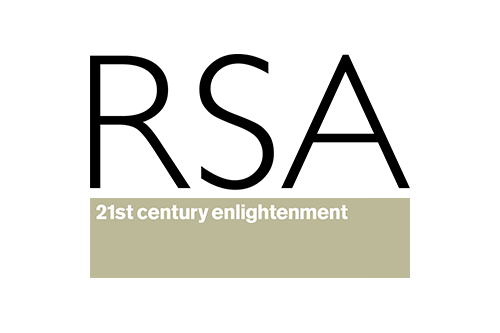
Laying the foundations for an education system built for tomorrow
The experience of millions of children being schooled at home could provide a catalyst for us to pose deeper questions about what we need of an education system built for tomorrow.
As well as grief, the long-term impacts of the Covid-19 pandemic will be shaped by how we respond to what we have learnt, from our fragility (as individuals and as a human race) and the unequal impact of this, to our definition of key workers. In his typically insightful essay, The path from crisis, the RSA’s Matthew Taylor explores the potential for change that has been opened up by the Covid-19 crisis but convincingly argues that if the opportunity to do things differently after the pandemic is to be taken, three preconditions must apply. First, that there is a pre-existing demand and capacity for change. Second, that the crisis not only strengthens that demand but configures alternative mindsets and practices; and, third, that there are political alliances, practical policies and innovations that are ready to be deployed in the period after the crisis when people and systems are more open to change.
These three conditions are already in existence in one area of activity that has been fundamentally impacted by the pandemic: our schooling system. Here. I am not talking, fundamentally, about the technology of teaching, the enforced mainstreaming of home-schooling or the emergence of distance learning in school settings, profound as all of those are. Rather, this essay explores how the pandemic is forcing and enabling us to think about some of the unresolved tensions in our approach to schooling, many of which are rooted in the long-standing failure to be clear about the purpose of education itself. The aim is to lay bare a pre-existing demand for change and to strengthen it, identifying some interesting and new political alliances developed through or prior to the crisis, that might make many of us – parents, teachers, school leaders and some policymakers – more open to change.
There has been a long debate about what we teach, why we teach it, and how. But for decades, we have largely been stuck between false choices between excellence and equality, and between standards and inclusion. And, our approach to reform in schooling has been to tinker and tweak: exam reform, curriculum adaption, revised inspection frameworks and new performance measures. This tinkering reveals a need for change – or at least, and from various starting points, dissatisfaction with the status quo – but fails to address this need, while being highly disruptive.
Many of those in education, who are not working tirelessly to keep schools open for the children of key workers and for those who are vulnerable, are finding the lockdown an enforced but useful space in which to reflect on the purpose of education and what we need schools to be like in the wake of Covid-19. Ironically, the lockdown has released at least some of us from the relentlessness of everyday schooling, and minds are drifting, not necessarily consciously, to what schooling could be like, and what it might need to be like as we approach the second quarter of the twenty-first century. And the longer the lockdown goes on, the starker this hitherto, often concealed, need for change becomes, and the greater the confidence that school leaders, teachers and the wider school workforce develop in beginning to preconfigure the various shapes that the new schooling might take.
But, first a little more on the need for change: the reality is that today’s entrant to reception class is likely to find their first job in an industry that does not yet exist, making something or (more likely) delivering a service that has not yet been invented, meeting a need we do not yet know we have. Moreover, this child is unlikely to go on to have one career, but three or four in a lifetime. Many of today’s young people will pursue multiple work channels alongside each other, mixing and matching, clambering across a complex career scaffolding rather than taking steady steps up a single career ladder. For those further up, this might prove to be enjoyable, if intrinsically precarious; for those at the margins, with multiple zero hours and fixed-term contracts, insecurity is the only guarantee.
For all, employment is likely to play a lesser role; it is no longer enough for our schools to prepare young people for employment alone. As Taylor has argued elsewhere, schools will need to play their part in a wider education system that enables individuals to strive and thrive in every aspect of their life beyond the workplace: as citizens, as local residents, and as family and community members. Such a future cannot hope to be served by a schooling system designed in and on the modernist template of the factory system of the late nineteenth and early twentieth century; one that may have delivered monotony for many workers but for some brought a certain solidarity in the production lines it generated.
Breadth and balance for an uncertain future
This means revisiting not just how we train our educators and run our institutions but also requires us to think harder about what a broad and balanced curriculum for an unknown future might look like, offering some hints as to how it might be delivered. Here, I focus on the secondary school curriculum, and specifically the upper secondary curriculum, but some of this is pertinent to primary, further and higher education.
Currently, our secondary school curriculum is a bit like a Billy bookcase from Ikea, or a big box of Lego. You can generate multiple variations. The Department for Education and its agencies periodically steer (and sometimes force) us towards a particular configuration, whether that be based on the Technical and Vocational Education Initiative in the 1980s, the National Curriculum launched towards the close of that decade or, more recently, the ill-named English Baccalaureate or E-Bac. But fundamentally the nature of schooling at scale is that all the building blocks have to fit together.
Most secondary schools would claim to offer a broad and balanced curriculum and, at first glance, that would appear to be true: English, maths, geography or history, some mix of physics, chemistry and biology (or perhaps some form of combined science course), French, German or Spanish, religious studies, design technology in some form, possibly computer science, maybe citizenship studies, maybe an arts course of some form.
But a closer inspection reveals significant challenges. First, this list, certainly the first two thirds of it, consists primarily of traditional academic subjects, as does its heavily promoted sub-set, the E-Bac. Second, in most schools, every subject is examined through the same assessment tool, the General Certificate of Secondary Education (GCSE), many of these in much the same way. This works reasonably well for those earlier in the list (including maths, English, the humanities, the sciences and languages) but it is questionable whether the model works as well for practical, creative and artistic subjects or a programme like citizenship education (where the consequences of failure do not bare thinking about). Third, the arts and creative subjects and the social sciences are pushed to the margins, with the latter barely featuring at all. Finally, other than a nod from the design technology curriculum, professional, technical and vocational subjects are absent from the mix.
Moreover, recent reforms to GCSE and A’ Level, have driven (in the name not so much of standards but of standardisation) this cross-subject homogeneity to new levels with the virtual end of teacher assessment, coursework and modularisation. These have all come rapidly back into vogue – or are forlornly missed – in the context of the cancellation of this year’s written papers. So much for learning through doing, as coursework enables students to do, and for offering those bite-sized chunks that are more manageable for the reluctant and tentative learner, for whom a linear two-year course with a single terminal examination is both fear-inducing and impractical. This is especially important to those sitting GCSE and A’ Level exams in non-school school settings, in further education, as returning adult learners (often failed by the system first time around) and to home learners (of which there will surely be more post Covid-19).
In short, an upper secondary curriculum composed of eight, nine, 10, or more GCSEs does not so much offer breadth and balance but variations on a theme, or maybe a couple of themes. It forces a significant range of subjects to compromise their very essence in the name of a one-size-fits all assessment tool. Since GCSE is the only trick in town, those skills and abilities, and the knowledge that resides in these subjects, are recast to fit the template; the examination defining the subject, rather than meeting the subject’s, or student’s, needs.
And this is before we consider the learning that might accrue from undertaking courses in professional, technical and vocational education, by participating in work-related and workplace-based learning or by engaging in community projects and enterprise initiatives. Too often, the vocational curriculum becomes one that learners fall onto because of a lack of success in the academic mainstream, rather being a positive choice. No wonder that, as a nation, we so often mourn our inability to attract young people into engineering or to build the productive capacity we need, as Covid-19 has once again exposed.
Meanwhile, in spite of the rhetoric, activities designed to develop the much-trumpeted qualities of character, empathy and resilience are marginalised and pushed into extra-curricular spaces as add-ons. The message conveyed by the system? Give the naughty boys (in this highly gendered landscape) a car engine, and build your character after your homework is done.
The total learned experience
It could be different and the system shock delivered by Covid-19 might cause us to ponder how. How might we shape a curriculum that delivers genuine breadth and balance? A balance that enables every learner to undertake, for instance, a community engagement experience, high-quality professional education and regular experiential exposure to the creative arts alongside, not instead of, academic study. A breadth that values more than one assessment tool.
There are, maybe three, glimpses of light here. Firstly, the forced cancellation of this summer’s GCSE and A’ Level examinations in favour of what I describe as “predicted grade plus” assessments (Teachers told to decide pupils’ grades for A levels and GCSEs, Rosemary Bennett, The Times, March 21 2020), ought to cause this government, after a decade of deriding teacher assessment and coursework, to think again about the value of teacher input to the assessment process. The system, rightly, will seek to ensure that this cohort of children is not disadvantaged but, as a group, their onward progress creates a live-experiment. Their future success might just tell us that our long-standing and growing dependency on a very narrow range of high-stakes tests might have reached its nadir.
Secondly, we have seen schools use a range of innovative ways to support young people and teachers, especially through online technologies. We have also seen innovative responses from children and young people and their families to the assignments set. This could teach us a lot about what aspects of learning and what areas of curriculum we need to deliver in traditional ways in traditional classroom settings, and where we may have been using yesterday’s technology, methodology and pedagogy for far too long.
Thirdly, the experience of lockdown may cause us to appreciate and re-appraise the multiple social purposes of schooling. Recent events have confirmed the importance of schools as community hubs and as the providers of childcare; they have underlined the often-unseen work that schools, especially those in our most deprived communities, undertake in supporting vulnerable children. The role of schools in providing a site for the personal development of all children – one in which self-esteem, self-confidence, character and resilience can be developed – is likely to leave a lasting, defining and long-overdue mark on our educational thinking. Too often, this has been seen as a ‘side-effect’ of schooling, not one of its core functions. And if we are to acknowledge this social function of schooling, surely that calls forth a new focus on the social curriculum and the oft-ignored areas of personal, social and health education (PSHE), of citizenship studies and of family learning.
These glimpses of light are likely to be buttressed by the re-emergence of curriculum at the heart of the recently revised Ofsted inspection framework. This ought to open up the space for a reconsideration of issues of breadth and balance, provided that the inspectorate is encouraged to think of curriculum not just as a list of subjects but also as the total learned experience of the child in the school. Curriculum is, after all, what schools do, and its public documentation, through vehicles like the National Curriculum and the E-Bac, a statement of the knowledge, skills and values that we think are sufficiently important to pass on to the next generation. If we want to nurture in our young a positive disposition towards activities like volunteering – so vital to the Covid-19 response but also instrumental in more joyous national moments such as London 2012 – the school curriculum offers a logical place to start and, as Taylor suggests, we need to start planning for this now.
Alliances for change
What is certain is that the total learned experience of every child needs to be richer and broader if we are to successfully prepare young people for a less predictable future. Navigating the virus itself, negotiating and living with unpredictability is something that we all have to become better at; skills that will surely serve us well after these days have passed.
In the process we are building new alliances, on and off-line, and devising and trialling innovations that we would be fools to discard as lockdown eases. In so doing, let us not only look to the new, but also re-energise and fire-up the alliances of the pre-Covid-19 landscape so often ignored by the E-Bac instrumentalists. This includes the creative practitioners of the expressive arts mobilised through a range of networks, including the Creative Partnerships movement. It includes the sports coaches and PE teachers – corralled and inspired by London 2012 – before the infra-structure of local school sports partnerships that enabled them to thrive was hastily dismantled months later. It means showing a new practical appreciation for the citizenship educators given the limelight by the former minister, David Blunkett, and the late political theorist, Bernard Crick, but never given the promised and required space in the curriculums of so many schools.
If we are to create an education and schooling system fit for a world as yet unknown, we need to retain and build on the energy and innovation of these and many other pre-existing and newly forming alliances. In this new landscape, a set of decent examination grades and a grasp of various academic disciplines will continue to open doors, but grades alone will be wholly insufficient.
Tweet Share on Facebook
